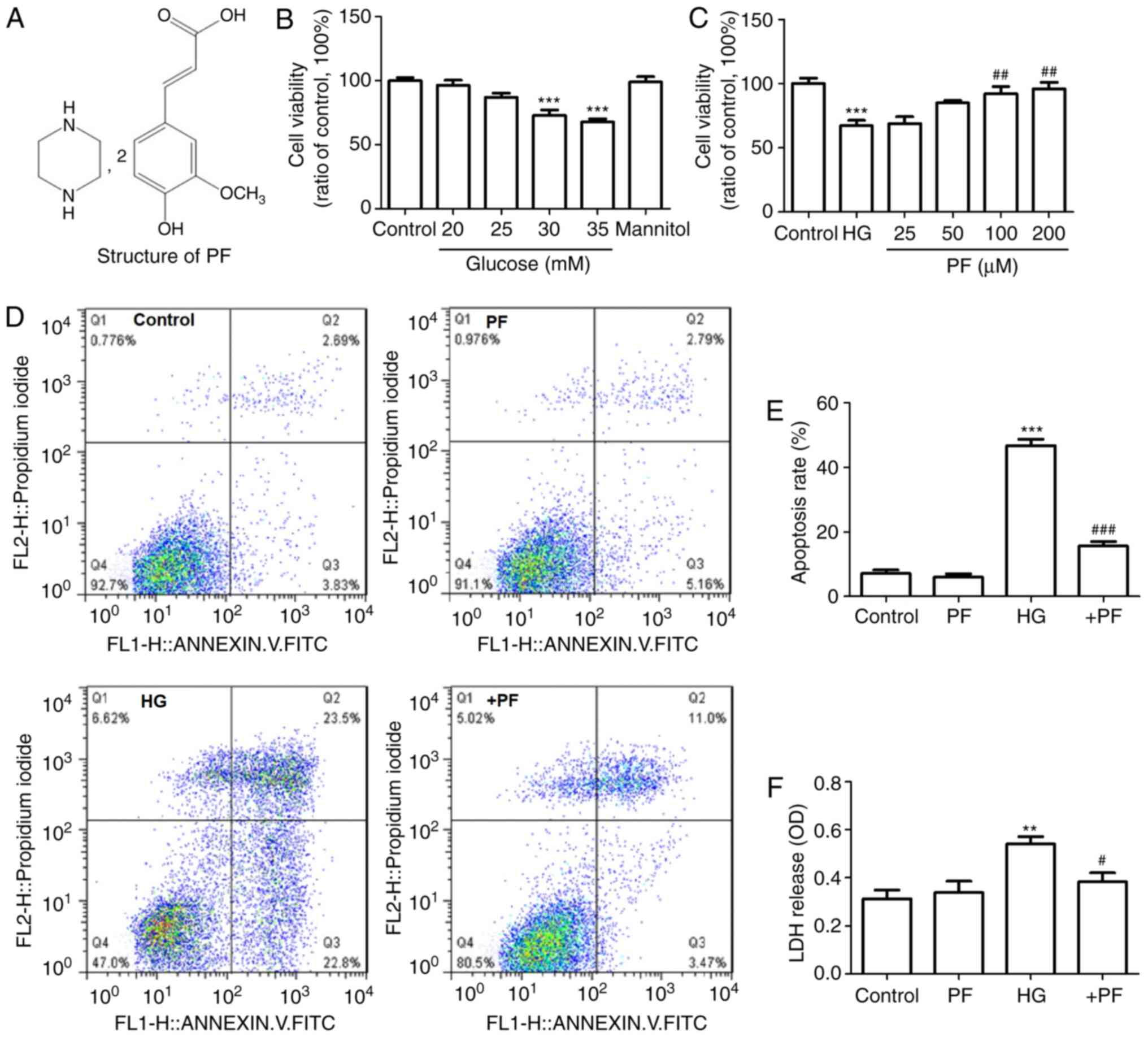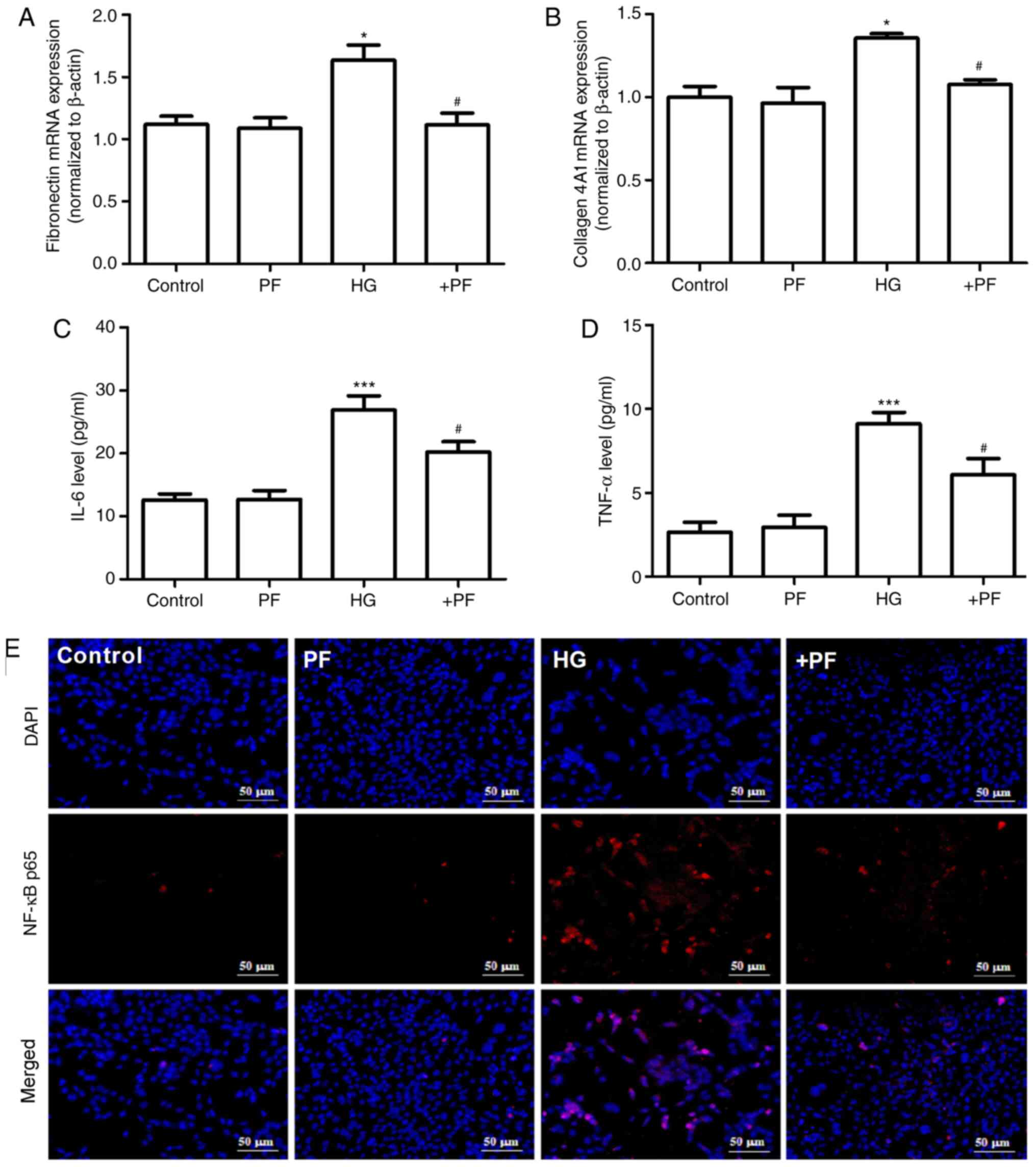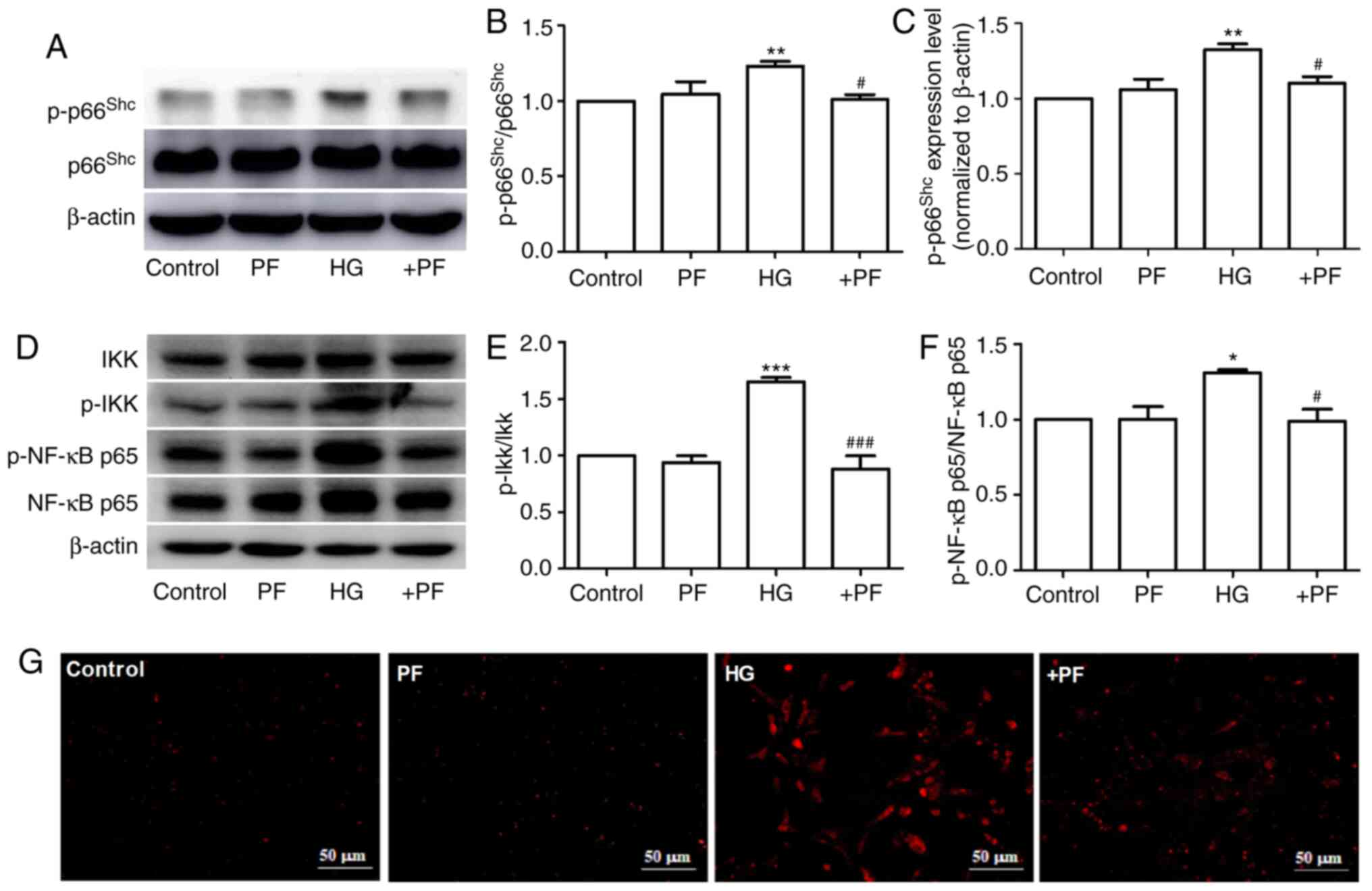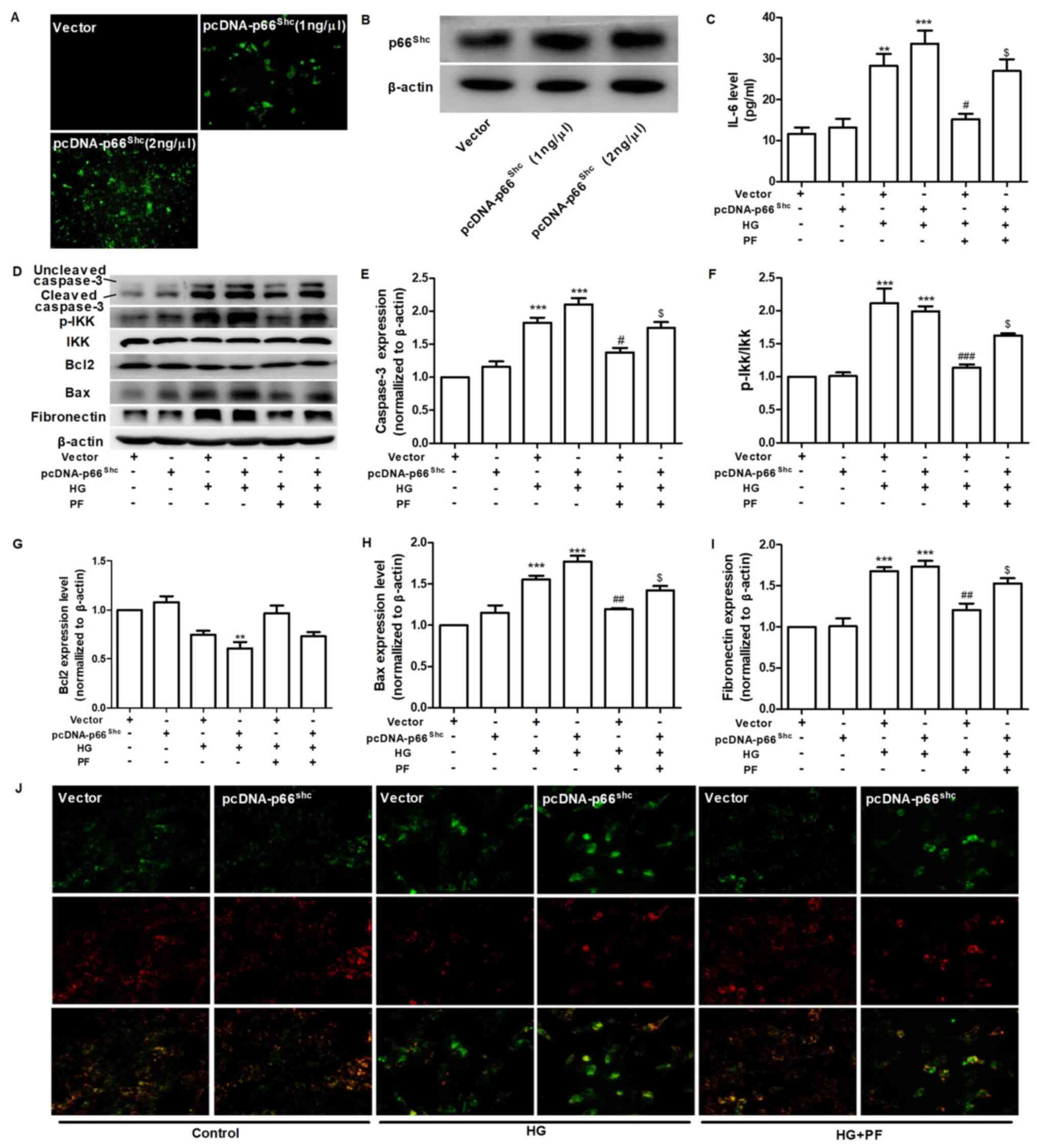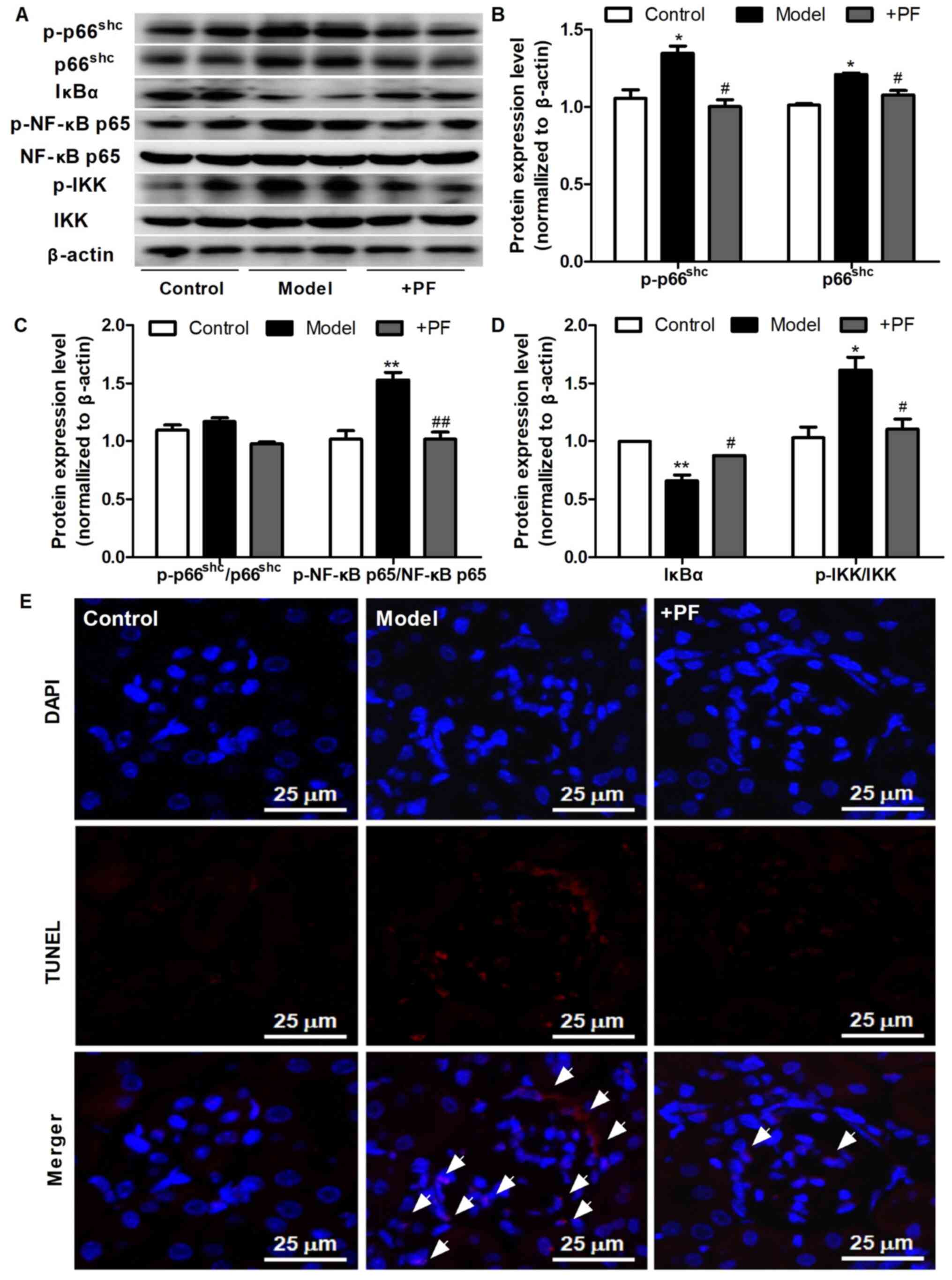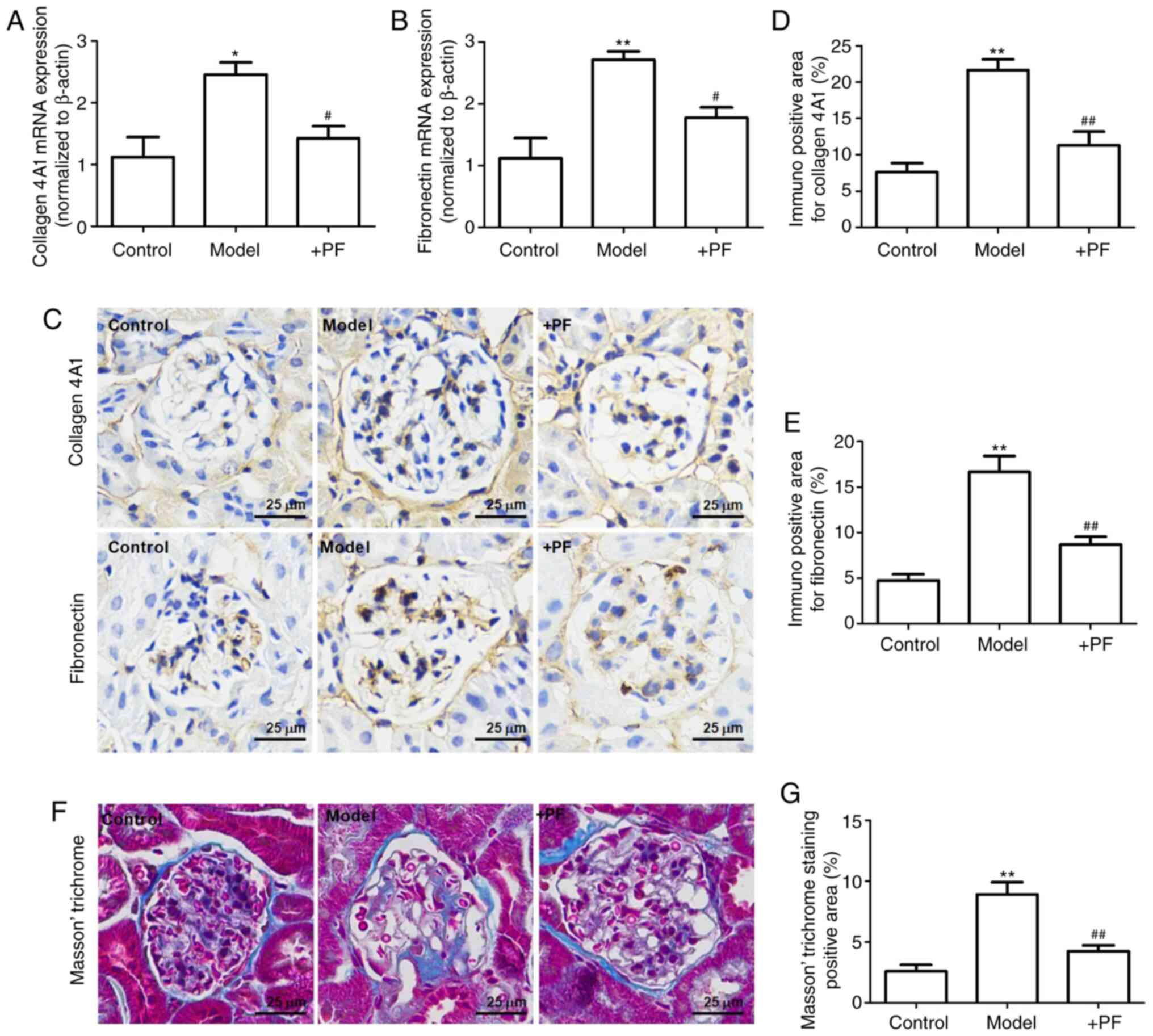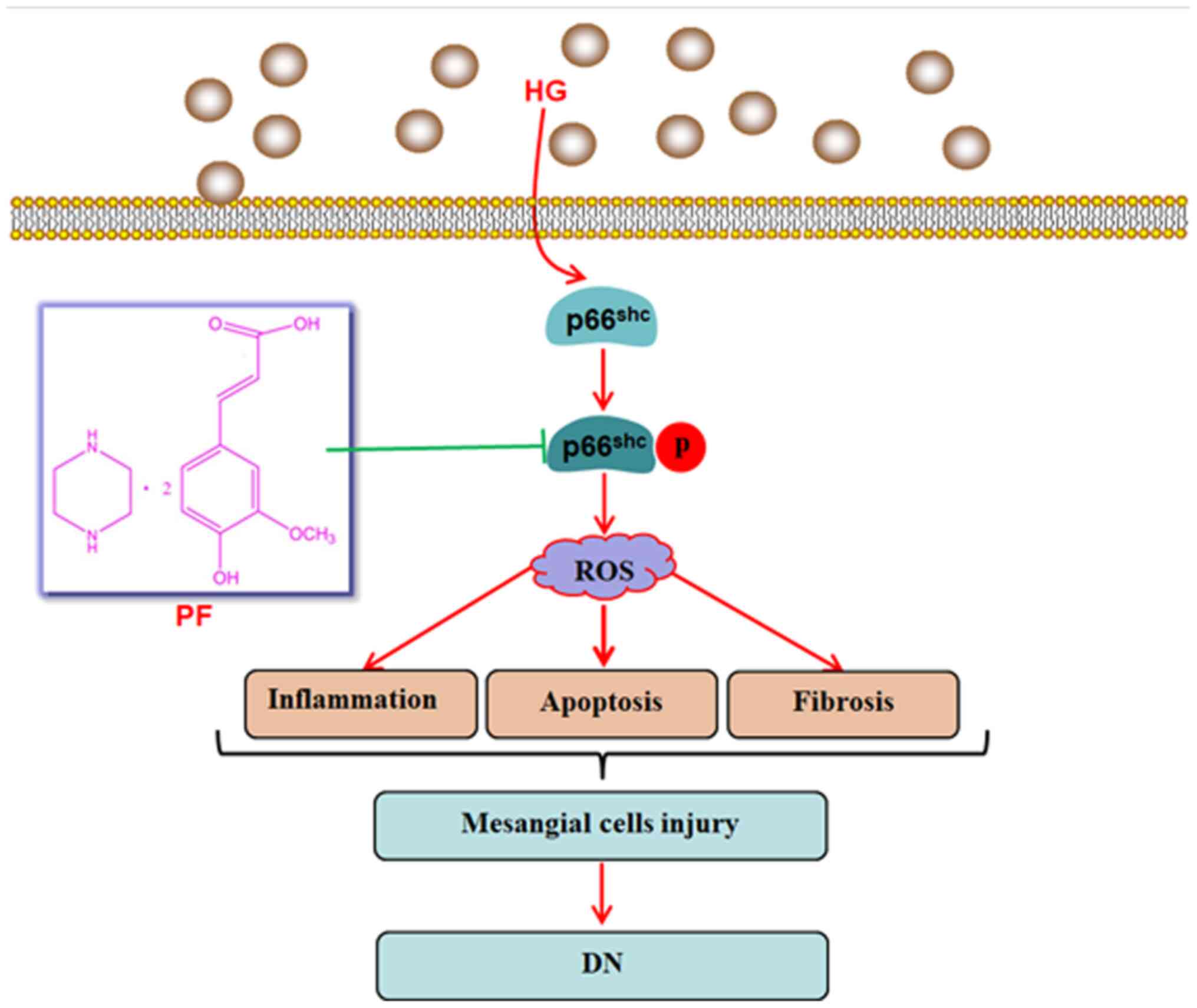|
1
|
Mou X, Chenv JW, Zhou DY, Liu K, Chen LJ,
Zhou D and Hu YB: A novel identified circular RNA, circ_0000491,
aggravates the extracellular matrix of diabetic nephropathy
glomerular mesangial cells through suppressing miR101b by targeting
TGFbetaRI. Mol Med Rep. 22:3785–3794. 2020.PubMed/NCBI
|
|
2
|
Cho NH, Shaw JE, Karuranga S, Huang Y, da
Rocha Fernandes JD, Ohlrogge AW and Malanda B: IDF diabetes atlas:
Global estimates of diabetes prevalence for 2017 and projections
for 2045. Diabetes Res Clin Pract. 138:271–281. 2018. View Article : Google Scholar : PubMed/NCBI
|
|
3
|
Yang X, Hu C, Wang S and Chen Q: Clinical
efficacy and safety of Chinese herbal medicine for the treatment of
patients with early diabetic nephropathy: A protocol for systematic
review and meta-analysis. Medicine (Baltimore). 99:e206782020.
View Article : Google Scholar : PubMed/NCBI
|
|
4
|
Jia Q, Yang R, Liu XF, Ma SF and Wang L:
Genistein attenuates renal fibrosis in streptozotocin-induced
diabetic rats. Mol Med Rep. 19:423–431. 2019.PubMed/NCBI
|
|
5
|
Zhang J, Dong XJ, Ding MR, You CY, Lin X,
Wang Y, Wu MJ, Xu GF and Wang GD: Resveratrol decreases high
glucose induced apoptosis in renal tubular cells via suppressing
endoplasmic reticulum stress. Mol Med Rep. 22:4367–4375.
2020.PubMed/NCBI
|
|
6
|
Dou L and Jourde-Chiche N: Endothelial
toxicity of high glucose and its by-products in diabetic kidney
disease. Toxins (Basel). 11:5782019. View Article : Google Scholar
|
|
7
|
Tung CW, Hsu YC, Shih YH, Chang PJ and Lin
CL: Glomerular mesangial cell and podocyte injuries in diabetic
nephropathy. Nephrology (Carlton). 23 (Suppl 4):S32–S37. 2018.
View Article : Google Scholar
|
|
8
|
Chen X, Yang Y, Liu C, Chen Z and Wang D:
Astragaloside IV ameliorates high glucoseinduced renal tubular
epithelial mesenchymal transition by blocking mTORC1/p70S6K
signaling in HK2 cells. Int J Mol Med. 43:709–716. 2019.PubMed/NCBI
|
|
9
|
Maezawa Y, Cina D and Quaggin SE:
Glomerular cell biology. Chapter 22. The Kidney. 5th edition.
Alpern RJ, Moe OW and Caplan M: San Diego: Academic Press; pp.
721–755. 2013
|
|
10
|
Mishra R, Emancipator SN, Kern T and
Simonson MS: High glucose evokes an intrinsic proapoptotic
signaling pathway in mesangial cells. Kidney Int. 67:82–93. 2005.
View Article : Google Scholar : PubMed/NCBI
|
|
11
|
Tsai YC, Kuo MC, Hung WW, Wu LY, Wu PH,
Chang WA, Kuo PL and Hsu YL: High glucose induces mesangial cell
apoptosis through miR-15b-5p and promotes diabetic nephropathy by
extracellular vesicle delivery. Mol Ther. 28:963–974. 2020.
View Article : Google Scholar : PubMed/NCBI
|
|
12
|
Ostergaard JA, Cooper ME and
Jandeleit-Dahm KAM: Targeting oxidative stress and anti-oxidant
defence in diabetic kidney disease. J Nephrol. 33:917–929. 2020.
View Article : Google Scholar : PubMed/NCBI
|
|
13
|
Di Lisa F, Giorgio M, Ferdinandy P and
Schulz R: New aspects of p66Shc in ischaemia reperfusion injury and
other cardiovascular diseases. Br J Pharmacol. 174:1690–1703. 2017.
View Article : Google Scholar : PubMed/NCBI
|
|
14
|
Giorgio M, Migliaccio E, Orsini F,
Paolucci D, Moroni M, Contursi C, Pelliccia G, Luzi L, Minucci S,
Marcaccio M, et al: Electron transfer between cytochrome c
and p66Shc generates reactive oxygen species that trigger
mitochondrial apoptosis. Cell. 122:221–233. 2005. View Article : Google Scholar : PubMed/NCBI
|
|
15
|
Clark JS, Faisal A, Baliga R, Nagamine Y
and Arany I: Cisplatin induces apoptosis through the ERK-p66shc
pathway in renal proximal tubule cells. Cancer Lett. 297:165–170.
2010. View Article : Google Scholar : PubMed/NCBI
|
|
16
|
Miller B, Palygin O, Rufanova VA, Chong A,
Lazar J, Jacob HJ, Mattson D, Roman RJ, Williams JM, Cowley AWJr,
et al: p66Shc regulates renal vascular tone in hypertension-induced
nephropathy. J Clin Invest. 126:2533–2546. 2016. View Article : Google Scholar : PubMed/NCBI
|
|
17
|
Menini S, Amadio L, Oddi G, Ricci C, Pesce
C, Pugliese F, Giorgio M, Migliaccio E, Pelicci P, Iacobini C and
Pugliese G: Deletion of p66Shc longevity gene protects against
experimental diabetic glomerulopathy by preventing diabetes-induced
oxidative stress. Diabetes. 55:1642–1650. 2006. View Article : Google Scholar : PubMed/NCBI
|
|
18
|
Zhan M, Usman I, Yu J, Ruan L, Bian X,
Yang J, Yang S, Sun L and Kanwar YS: Perturbations in mitochondrial
dynamics by p66Shc lead to renal tubular oxidative injury in human
diabetic nephropathy. Clin Sci (Lond). 132:1297–1314. 2018.
View Article : Google Scholar : PubMed/NCBI
|
|
19
|
Jiang W, Xiao T, Han W, Xiong J, He T, Liu
Y, Huang Y, Yang K, Bi X, Xu X, et al: Klotho inhibits
PKCalpha/p66SHC-mediated podocyte injury in diabetic nephropathy.
Mol Cell Endocrinol. 494:1104902019. View Article : Google Scholar : PubMed/NCBI
|
|
20
|
Li D, Li B, Peng LX, Liu R and Zeng N:
Therapeutic efficacy of piperazine ferulate combined with
irbesartan in diabetic nephropathy: A Systematic review and
meta-analysis. Clin Ther. 42:2196–2212. 2020. View Article : Google Scholar : PubMed/NCBI
|
|
21
|
Liu Z, Pan J, Sun C, Zhou J and Li NA:
Clinical effects of perazine ferulate tablets combined with
eucalyptol limonene pinene enteric soft capsules for treatment of
children with IgA nephropathy. Exp Ther Med. 12:169–172. 2016.
View Article : Google Scholar : PubMed/NCBI
|
|
22
|
Zheng L, Chen S, Wang F, Huang S, Liu X,
Yang X, Zhou H, Zhao GP, Luo M, Li S and Chen J: Distinct responses
of gut microbiota to Jian-Pi-Yi-Shen decoction are associated with
improved clinical outcomes in 5/6 nephrectomized rats. Front
Pharmacol. 11:6042020. View Article : Google Scholar : PubMed/NCBI
|
|
23
|
Jianzhi S, Qizeng W, Bin L, Wenhui L,
Yunpeng C, Chenrong F, Lin Z and Huiting C: Piperazine ferulate
exerts antihypertensive effect and improves endothelial function in
vitro and in vivo via the activation of endothelial nitric oxide
synthase. Cell Mol Biol (Noisy-le-grand). 65:119–124. 2019.
View Article : Google Scholar : PubMed/NCBI
|
|
24
|
Yang YY, Shi LX, Li JH, Yao LY and Xiang
DX: Piperazine ferulate ameliorates the development of diabetic
nephropathy by regulating endothelial nitric oxide synthase. Mol
Med Rep. 19:2245–2253. 2019.PubMed/NCBI
|
|
25
|
Livak KJ and Schmittgen TD: Analysis of
relative gene expression data using real-time quantitative PCR and
the 2(-Delta Delta C(T)) method. Methods. 25:402–408. 2001.
View Article : Google Scholar : PubMed/NCBI
|
|
26
|
Wong YH and Abdul Kadir H: Induction of
mitochondria-mediated apoptosis in Ca Ski human cervical cancer
cells triggered by mollic acid arabinoside isolated from leea
indica. Evid Based Complement Alternat Med. 2012:6847402012.
View Article : Google Scholar : PubMed/NCBI
|
|
27
|
Cheng YS, Chao J, Chen C, Lv LL, Han YC
and Liu BC: The PKCβ-p66shc-NADPH oxidase pathway plays a crucial
role in diabetic nephropathy. J Pharm Pharmacol. 71:338–347. 2019.
View Article : Google Scholar : PubMed/NCBI
|
|
28
|
Haller M, Khalid S, Kremser L, Fresser F,
Furlan T, Hermann M, Guenther J, Drasche A, Leitges M, Giorgio M,
et al: Novel Insights into the PKCbeta-dependent Regulation of the
Oxidoreductase p66Shc. J Biol Chem. 291:23557–23568. 2016.
View Article : Google Scholar : PubMed/NCBI
|
|
29
|
Dragos D, Manea MM, Timofte D and Ionescu
D: Mechanisms of herbal nephroprotection in diabetes mellitus. J
Diabetes Res. 2020:57105132020. View Article : Google Scholar : PubMed/NCBI
|
|
30
|
Rayego-Mateos S, Morgado-Pascual JL,
Opazo-Rios L, Guerrero-Hue M, Garcia-Caballero C, Vazquez-Carballo
C, Mas S, Sanz AB, Herencia C, Mezzano S, et al: Pathogenic
pathways and therapeutic approaches targeting inflammation in
diabetic nephropathy. Int J Mol Sci. 21:37982020. View Article : Google Scholar
|
|
31
|
Davidson A, Berthier C and Kretzler M:
Pathogenetic Mechanisms in lupus nephritis. Chapter 18. Dubois'
Lupus Erythematosus and Related Syndromes. 8th edition. Wallace DJ
and Hahn BH: W.B. Saunders; Philadelphia, PA: pp. 237–255. 2013,
View Article : Google Scholar
|
|
32
|
Fu J, Wei C, Zhang W, Schlondorff D, Wu J,
Cai M, He W, Baron MH, Chuang PY, Liu Z, et al: Gene expression
profiles of glomerular endothelial cells support their role in the
glomerulopathy of diabetic mice. Kidney Int. 94:326–345. 2018.
View Article : Google Scholar : PubMed/NCBI
|
|
33
|
Wan C, Su H and Zhang C: Role of NADPH
oxidase in metabolic disease-related renal injury: An update. Oxid
Med Cell Longev. 2016:78130722016. View Article : Google Scholar : PubMed/NCBI
|
|
34
|
Chen X and Fang M: Oxidative stress
mediated mitochondrial damage plays roles in pathogenesis of
diabetic nephropathy rat. Eur Rev Med Pharmacol Sci. 22:5248–5254.
2018.PubMed/NCBI
|
|
35
|
Ebaid H, Bashandy SAE, Abdel-Mageed AM,
Al-Tamimi J, Hassan I and Alhazza IM: Folic acid and melatonin
mitigate diabetic nephropathy in rats via inhibition of oxidative
stress. Nutr Metab (Lond). 17:62020. View Article : Google Scholar : PubMed/NCBI
|
|
36
|
Xie Z, Zhong L, Wu Y, Wan X, Yang H, Xu X
and Li P: Carnosic acid improves diabetic nephropathy by activating
Nrf2/ARE and inhibition of NF-κB pathway. Phytomedicine.
47:161–173. 2018. View Article : Google Scholar : PubMed/NCBI
|
|
37
|
Orsini F, Migliaccio E, Moroni M, Contursi
C, Raker VA, Piccini D, Martin-Padura I, Pelliccia G, Trinei M,
Bono M, et al: The life span determinant p66Shc localizes to
mitochondria where it associates with mitochondrial heat shock
protein 70 and regulates trans-membrane potential. J Biol Chem.
279:25689–25695. 2004. View Article : Google Scholar : PubMed/NCBI
|
|
38
|
DRUGDATAEXPY. 2009. Chongqing, .
http://zy.yaozh.com/instruct/20160513-1/35.jpgMarch
1–2021
|
|
39
|
Nemoto S and Finkel T: Redox regulation of
forkhead proteins through a p66shc-dependent signaling pathway.
Science. 295:2450–2452. 2002. View Article : Google Scholar : PubMed/NCBI
|















